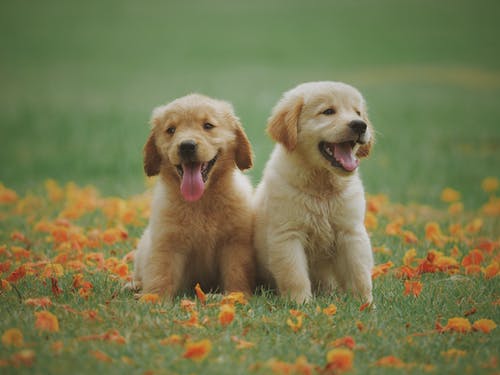
Cesarean section (C-section) surgery is a medical procedure performed on pets when natural childbirth is not possible or safe for the mother or her offspring. Like humans, C-sections in pets require careful planning and preparation to ensure the mother’s and her babies’ safety and well-being. If you’re facing the possibility of C-section surgery for your pet, it’s essential to understand what it entails and how to prepare. This article will discuss how to recognize the need for C-section surgery, prepare your pet, and be proactive in such situations.
How Will I Know If My Pet Needs C-Section Surgery?
Recognizing the need for C-sections for dogs in Memphis, TN is crucial to ensuring the mother’s and her offspring’s health and survival. Several signs and circumstances may indicate that a C-section is necessary:
- Prolonged Labor: If your pet has been in labor for an extended period without producing any offspring, it may be a sign that something obstructs the birth canal or that the puppies or kittens are too large to pass naturally.
- Fetal Distress: Signs of fetal distress, such as a drop in the mother’s body temperature, weak contractions, or a lack of fetal movement, may indicate that the unborn animals are distressed and need immediate delivery.
- Obstetric Dystocia: This condition occurs when there is an abnormality in the birthing process, such as a malpositioned fetus, a twisted uterus, or a blocked birth canal, preventing natural delivery.
- Maternal Health Issues: If your pet has underlying health problems, such as a narrow pelvis, obesity, or a history of difficult births, she may be at higher risk of needing a C-section.
- Exhaustion: Prolonged labor can lead to maternal exhaustion, making it necessary to intervene surgically to prevent further complications.
- Emergency Situations: In some cases, uterine rupture or heavy bleeding may necessitate an immediate C-section to save the mother and her offspring.
If you notice any of these signs or have concerns about your pet’s labor, it’s essential to consult with your veterinarian promptly. Early intervention can be life-saving for both the mother and her babies.
How Can I Prepare My Pet for C-Section Surgery?
Preparing your pet for C-section surgery involves several steps to ensure a smooth and successful procedure:
1. Consultation with a Veterinarian
The first and most important step is to consult with your veterinarian. Schedule an appointment when you suspect your pet might need a C-section. Your veterinarian will assess your pet’s health and determine the best action. They will also discuss the reasons for the C-section and its potential risks.
Depending on the situation, your veterinarian might recommend a series of diagnostic tests before the C-section. Diagnostic imaging like X-rays or ultrasound may be essential for understanding your pet’s condition and planning the surgery. These services often involve veterinary labs equipped with state-of-the-art equipment to provide crucial insights into your pet’s health.
2. Preoperative Assessment
Before the surgery, your veterinarian will conduct a comprehensive preoperative assessment. This assessment may include blood tests, X-rays, and ultrasound to evaluate the puppies or kittens’ number, size, and position. These tests help identify potential complications and ensure your pet is optimal health for surgery.
3. Stabilize the Mother
If your pet is distressed, experiencing complications, or is exhausted from prolonged labor, your veterinarian may need to stabilize her condition before the surgery. This may involve providing intravenous fluids to correct dehydration, administering oxygen to ensure proper oxygenation, or addressing other immediate health concerns.
4. Anesthesia
During the C-section surgery, your pet will be under general anesthesia to keep her pain-free and relaxed. Your veterinarian will carefully choose the appropriate anesthesia and monitoring equipment to ensure your pet’s safety throughout the procedure.
5. Surgical Team
C-sections are typically performed by a team of skilled professionals, including a veterinarian and trained veterinary technicians. Choosing a reputable veterinary clinic or hospital with experience in performing C-sections is essential. The surgical team will work together to ensure the safe and efficient delivery of the puppies or kittens.
6. Post-Operative Care
After the C-section, your pet will require close monitoring and post-operative care. Your veterinarian will provide detailed instructions on how to care for your pet during her recovery. This may include information on wound care, medication administration, and feeding instructions.
For some, understanding the world of pet medication involves delving into pet internal medicine. This field concerns preventing, diagnosing, and treating diseases in pets. Learning more about this can provide insight into your pet’s upcoming procedure and required medication. This path could start with exploring a range of resources, such as online blogs, articles, and website resources, like this link to a helpful overview of pet internal medicine.
7. Puppy/Kitten Care
If your pet is pregnant and undergoing a C-section, ensure you have all the necessary supplies for the newborns. This includes a warming box to maintain their body temperature, clean towels to dry them, and a bottle-feeding kit if necessary. Be prepared to assist with feeding and keeping the newborns comfortable.
8. Home Environment
Create a quiet, comfortable, and stress-free environment at home for your recovering pet. Minimize disturbances, keep her confined to a safe area, and provide soft bedding for her comfort. Follow your veterinarian’s recommended activity restrictions and gradually reintroduce normal routines as your pet heals.
Conclusion
C-section surgery on pets is a life-saving procedure when natural childbirth is not possible or safe. Recognizing the signs that your pet may need a C-section and seeking prompt veterinary care is crucial. Proper preparation is essential for a successful outcome, including consulting with a veterinarian, preoperative assessments, and ensuring a safe and supportive environment.
Remember that C-section surgery in pets is a serious medical procedure, and the health and well-being of the mother and her offspring depend on timely intervention and proper care. Being proactive and well-prepared can increase the chances of a positive outcome for your beloved pet and her newborns.






